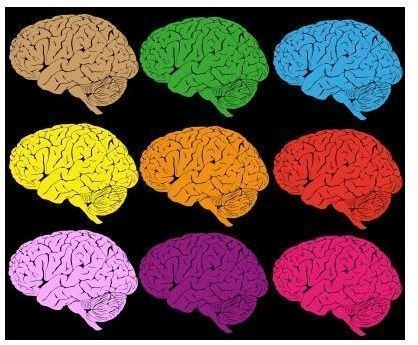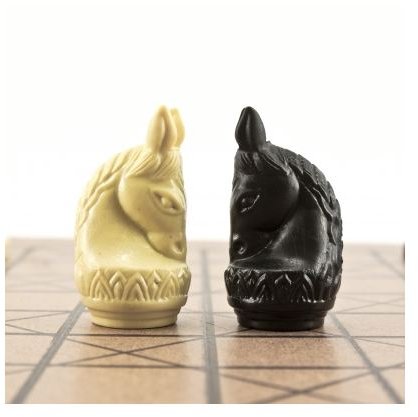The Meanings of Colors in Language and Literature
Teaching the Colors
When you teach the colors to English as a Foreign Language learners you should be aware that there are additional references that you can make. Sure, the lists of basic, primary and secondary colors can make for useful lexical context but there’s more. For example, consider the use of colors as proper names for people and animals. In addition, there is the use of colors to represent or express emotions.
Then too, a multitude of colors are used in English idioms which make for “colorful” expressions. Colors can quite easily represent very different things from one language to another, so it’s highly likely that cultural aspects may well emerge while teaching your English language learners colors in English. Rather than being a distraction, this should be viewed as a welcomed enrichment to your EFL classes.
English as a Foreign Language Learning Colors Examples
Here are a few starter examples:
White: This color technically isn’t a “color” at all. Neither is black for that matter. Nonetheless, it is often used to represent good, cleanliness or purity in many cultural aspects. Angels and the “heavenly hosts" are pictured as wearing white robes. (Revelation 7:14) White is used in uniforms of Heath and Culinary Arts professionals like Chefs. “White as snow” is an expression which denotes a high state of cleanliness, innocence or purity. New brides wear white. Bright white is considered to be freshly cleaned, but an “off-white” is not quite so. A “white” knight was characterized as good as opposed to the “black” knight who was “the bad guy” of medieval times. White symbolizes death in Japan instead of black as in other countries.
Red: What images do you conjure up by a person’s “seeing red”. What does a woman’s wearing a “red dress” mean? Why are bullfighter’s capes almost always red even though bulls are color-blind? What does the color red represent in the country where you teach? How is the color red used – or NOT used?
Yellow: In English, it’s a serious insult to say, “You’re yellow” to a man. Why? Because the color is often used in English to represent fear and cowardice. To “turn yellow” means to become fearful to the point of inaction. The color yellow however, can also positively represent brightness, cheerfulness, sunshine, etc.. If something has “yellowed” though, it usually means that it’s aged, oxidized, tarnished or spoiled in some way. Many fruits and vegetables are ripe when they turn yellow. But if your pants or skirt have a yellow stain in them when you get up, well, oops! Excuse me!
Green: Why are lots of super-hero comic characters green? Why, there’s Green Lantern, Green Arrow, the Green Goblin and the Hulk, among others that your language learners may know better than you do. “What’s wrong with green”, you ask? Nothing - unless it’s the color of your date last night and it’s not Halloween. Green represents money and prosperity or good fortune in the USA, such as with “greener” pastures or having a “green thumb”. Going green refers to the environment and ecology ideal of going back to nature or becoming more natural in our habits and lifestyle. Then again, you can be “green with envy” or “turn green” if you’re sick.
Blue: This color has a tremendous number of uses in the English language. When you’re blue it means you’re sad. The musical genre called “the Blues” is typically about the effects of problems on a person’s life: my wife left me, the dog died, I lost my house, I have no money, I lost my job, I’m sick, I’m so lonely, my girl (or guy) ran off with my best friend, etc.. The list could go on and on, but I’ll stop here or I’ll depress myself and get “the blues”. Jehovah God must like the color blue; both the sky and the ocean are blue. If you “turn blue”, it means a lack of oxygen, i.e., approaching death. Also, in Afro-American culture, an ebony-skinned man or a jet-black dog is often nick-named “Blue”.

Purple: Royalty has long been represented by this color, dating back to the ancient Persians. Even in the Holy Bible, it is mentioned in descriptions of valuables like gold, silver, copper, fine linens and wool. (Exodus 25: 3 and 4) This color often was associated with or symbolized riches, honor, and royal majesty, due to the expense of producing it. To be “clothed in purple" symbolized great wealth and importance (Daniel 5:7 and Revelation 17:4) In explaining the parable of the rich man and Lazarus, Jesus Christ himself used the words, “But a certain man was rich, and he used to deck himself with purple and linen ….”
Black: In many countries, black is the color of mourning and represents death. It can also represent piety or stoicism. At one point in history it also represented professionalism and was worn by priests, lawyers and doctors. Indeed, some of these trades and professions still use black for their garments even today. To have a “black heart” or commit “black deeds” illustrates yet other idiomatic usage of the color black to represent bad or evil. A “black day” generally is a bad day. However, the “Black Friday” after Thanksgiving, is so called because sales of merchandise is so good that many retailers are put “in the black” – or a state of profitability, just from the business done on that day. Absolute darkness is frequently symbolized as “pitch black” or “blacker than a thousand midnights down in a Cypress swamp”, to paraphrase the literary phrase. Zorro dresses all in black, but he’s a good guy, right? His female version, “The Black Whip”, was also clothed in black. Quechua Indian women always wear black skirts.
Teaching the Colors in Language Learning
Far more language learning applications, idioms, slang and expressions exist which are language and color-vocabulary related. Why not plan on using this linguistic aspect as part of a future lesson with your English as a foreign language learners. You might just be pleasantly surprised at how good a topic teaching the colors in English and other foreign languages can actually be.
Here is an article on stringing together color idioms to make an amusing ESL lesson.
References
- Image: White And Black Knight by zirconicusso under CC BY 2.0
- Image: Colorful Brain by smokedsalmon under CC BY 2.0
